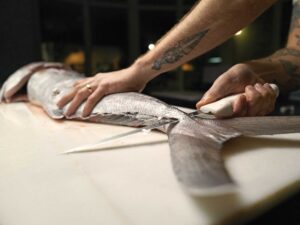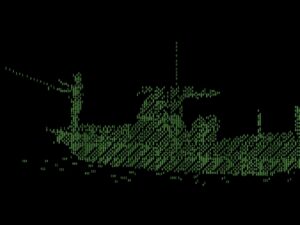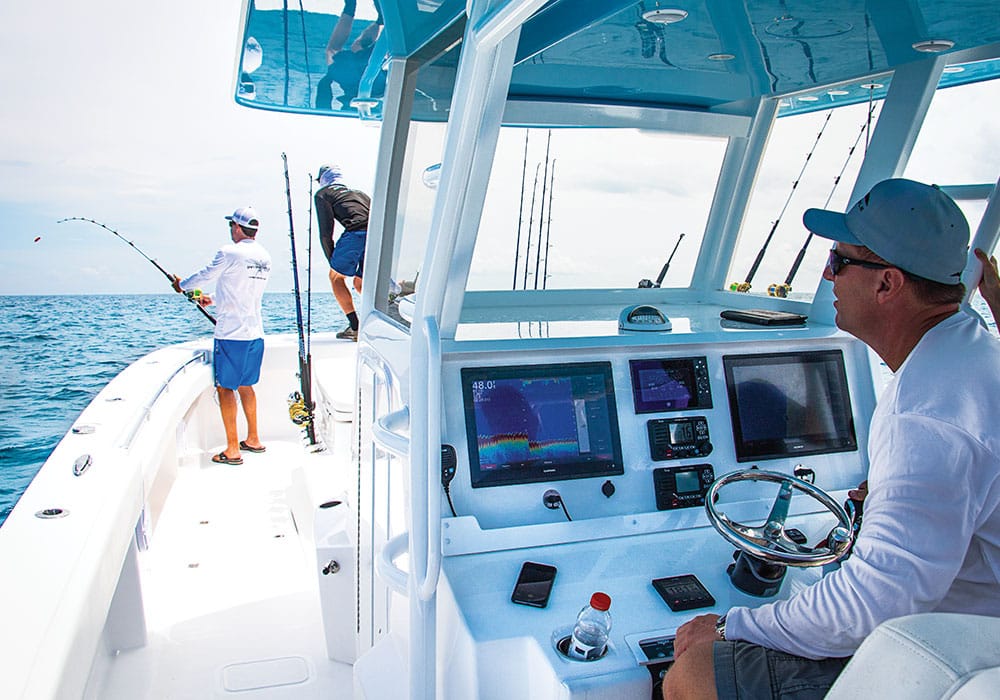
Having more than one display at the helm was common back when sounders, GPS and radars were all housed in separate stand-alone units. Then, in the 1990s, manufacturers combined GPS, plotter and fish-finder functions into single models.
Such products were initially known as combos, but with integration of additional features, greater processing power, networking, and touchscreen capabilities, the nomenclature evolved. Most are now called multifunction displays — MFDs for short.
Such displays with split-screen functions let boating anglers pare down to just one machine. With a touchscreen
MFD, boaters suddenly have access and control of GPS, chart plotting, fish finding, scanning sonar, radar, autopilot, thermal imaging, engine instrumentation, digital switching, audio entertainment and more on a single color display.
MFDs have continually grown in size, with screens up to 24 inches offered by brands such as Furuno, Garmin, Raymarine and Simrad.
Increasingly large screens seem to support the idea of consolidating features into just one MFD. But boating anglers appear to have other ideas. Instead of just one, today it’s common to find two or more MFDs on saltwater fishing boats, usually networked so that information can be shared on both screens.
What’s behind this trend? Are two MFDs better than one? Are you able to catch more fish using two MFDs? Let’s look at some of the factors to consider when equipping your boat with today’s advanced MFDs.
Helm Space
One major consideration when deciding between one or two MFDs is helm space. Some boats, including mine, lack room for more than one. In this case, there’s no decision to make. Or is there?
If you decide you want a second MFD (for reasons we will discuss later), there are ways to add a display when helm space is limited. You can, for example, add a rail mount — available from brands such as Edson, Ram, ScanStrut, SeaView and West Marine — that accommodates a second display.
Edson’s Clamp-On Accessory Mounts fit horizontal, vertical and angled rails, using 3- and 7-inch stainless-steel bases. These mounting systems mate with Edson’s Electronic Display Housings.
Other avenues include overhead electronics boxes, pedestal mounts and electronics pods. Some of these mounting systems require using a slightly smaller display than your primary MFD. For more ways to make room for additional electronics, visit saltwatersportsman.com/more-room-for-fishing-electronics.
What a View
If your boat does offer abundant helm space, the question boils down to this: Should I opt for the largest MFD that fits (say, a 16-inch model) or choose two smaller ones (7- or 8-inch models, for instance) to fill the space? The answer depends largely on how many functions you plan to view at once, how many panes the split-screen allows, and your visual acuity.
Some 16-inch MFDs allow for up to six split-screen panes. Other 16-inch models, however, allow for only four panes, problematic if you want to use the fish finder, plotter, side imaging, digital switching and radar all at once.
In this case, you might want to opt for the brand of 16-incher that offers six panes. Or you could go with twin 8-inch MFDs of the alternate brand, both of which offer three panes in split-screen mode, and viola — now you can view and control six functions at once.
Keep in mind, nevertheless, that the more you slice and dice the screens into smaller panes, the more the ability to recognize details such as a subtle sonar mark, weak radar target, or aid to navigation diminishes, especially on a heaving helm deck.
So, unless you possess the stabilized eye of an eagle, think about using just two or three functions at once, whether you choose one big-screen model or two smaller MFDs.
Fail-Safe
Now that MFDs serve as the main control hub for so many onboard systems, an MFD failure could result in a minor catastrophe. With just one display on the boat, you’d lose control of just about everything. It’s far worse than going without a fish finder or plotter. On some boats, without an MFD, turning on the livewell pump, your nav lights or, heaven forbid, your stereo can become a major hassle.
Sure, there are workarounds in case of an MFD failure, but they usually take time. The alternative might involve climbing inside the console to plug in some jumpers to activate circuits for key accessories. Not a fun job, especially in rough seas and hot, humid weather. This is when having two MFDs becomes a godsend. It’s far easier to switch to the other functional display, which is cross-networked with all systems so you can maintain control.
Ultimately, with multiple MFDs, there’s peace of mind in knowing that you can still monitor the boat’s onboard systems, even if one display goes kaput.
Cheaper by the Pair
The cost of new MFDs is a consideration, because these high-technology products represent substantial investments. But while you’d think that two smaller displays would be more expensive than one large one, that’s not the case.
Let’s compare one Simrad NSS16 evo3 to a pair of Simrad NSS7 evo3 units. The 16-inch MFD retails for about $5,500, while the 7-inch models retail for about $1,300 apiece — or $2,600 for both, nearly 50 percent less for two smaller units versus one large one.
To dispel any thoughts that this is a brand anomaly, we also compared the 16-inch Garmin GPSMap 7616xsv, retailing for about $5,600, to a pair of 8-inch GPSMap 7408xsv units, which sell for about $1,400, or $2,800 for both.
At issue here is the manufacturing cost of LCD high-definition, color-screen technology, which increases exponentially with the size. To give you an idea, 24-inch MFDs — about the largest available today — retail for $11,000 or more.
Most new saltwater fishing boats are now equipped with at least two MFDs, and some larger center-consoles and express boats come with three. That gives me a strong indication of what direction I would take on my next new-boat purchase. I would go with two of the largest displays that space allows. This might not help me catch more fish, but the display redundancy offers some assurance of maintaining access and control of the fish finder, navigation and other systems, and I’ll probably save money by going with a pair of smaller displays instead of a single larger one.
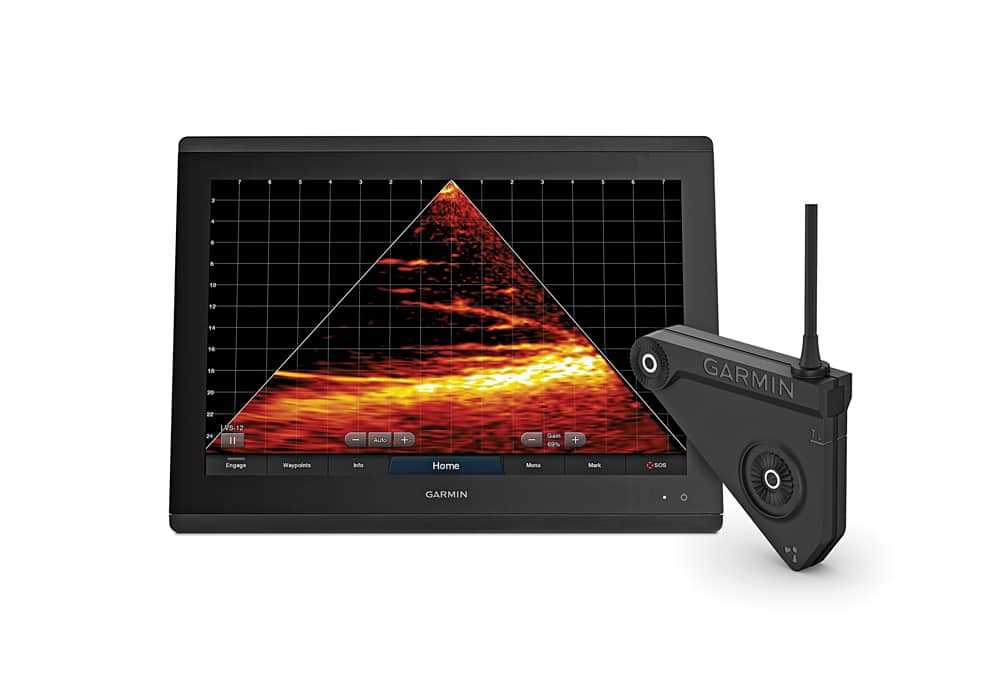
Garmin’s new Panoptix LiveScope LVS12 transducer offers both 30-degree forward and down real-time scanning-sonar views with Garmin GPSMap 8400/8600xsv MFDs without the need for a black-box module. Panoptix LiveScope lets anglers see images so clear that it’s possible to distinguish between species of fish. The LVS12 includes a transom-mount kit as well as a trolling-motor mounting kit. $499.99; garmin.com
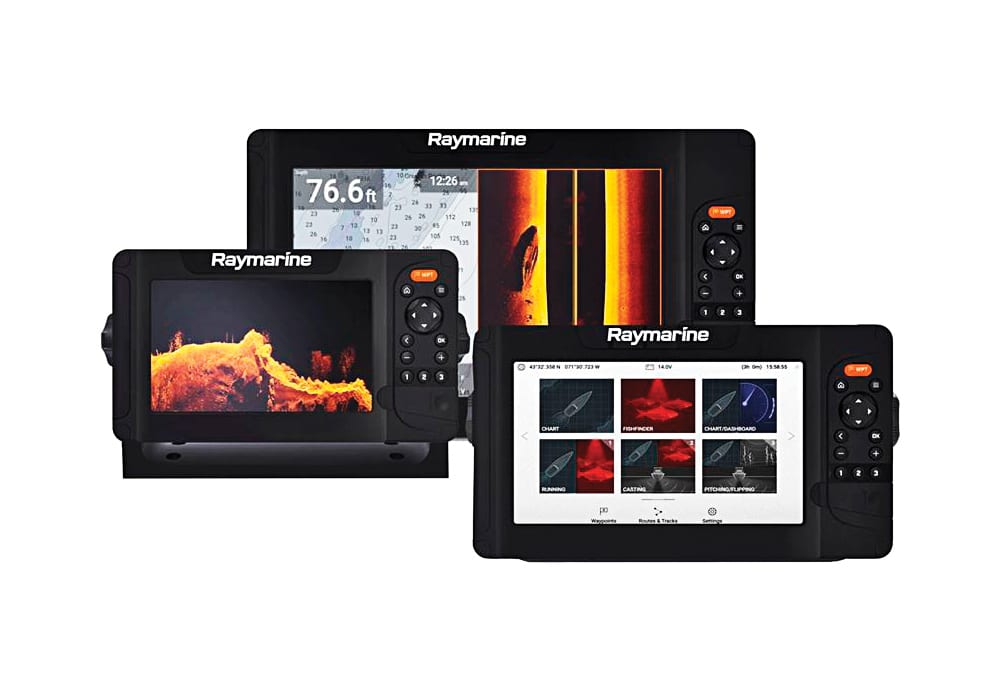
Raymarine has debuted the Element series of sonar/GPS displays featuring RealVision 3D and new HyperVision with ultra-high 1.2 MHz chirp sonar frequency. Element’s LightHouse Sport operating system lets anglers quickly mark fishing spots and create high-definition bathymetric maps using the new Raymarine RealBathy sonar map generator. The series includes 7-, 9- and 12-inch models. $799.99 to $2,249.99; raymarine.com
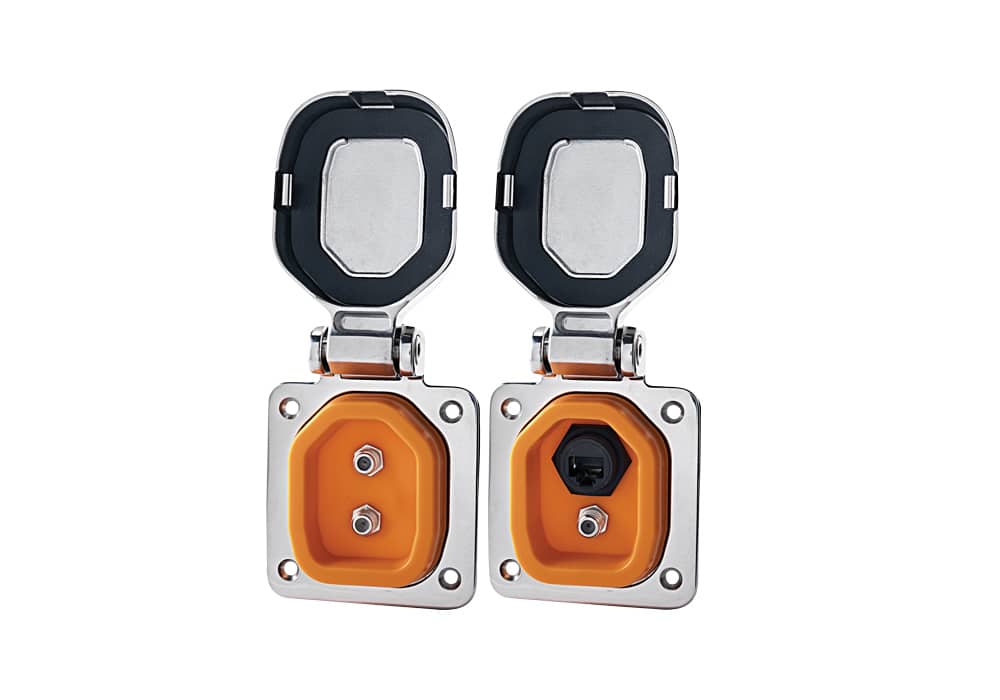
SmartPlug Systems’ new dual-coax and coax-Ethernet inlets use a distinctive stainless-steel housing, and a size and hole pattern that match industry standards for easy installation. One version includes dual F-type male coaxial cable connectors; the other one has a coax connector and one female Ethernet port. Available in 30- and 50-amp configurations. $85 for double coax, $99 for coax-Ethernet model; smartplug.com



